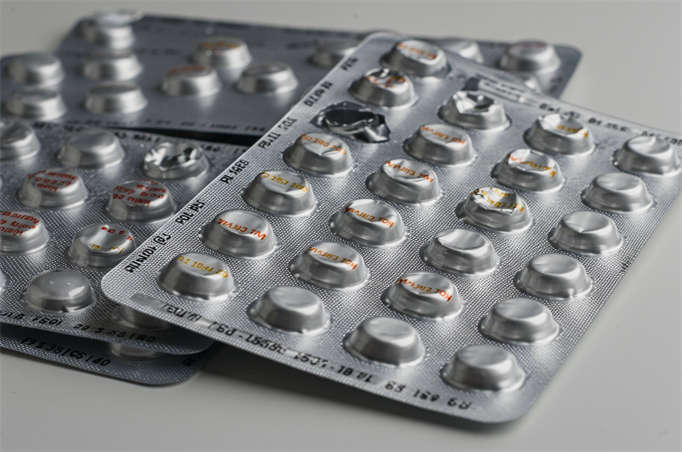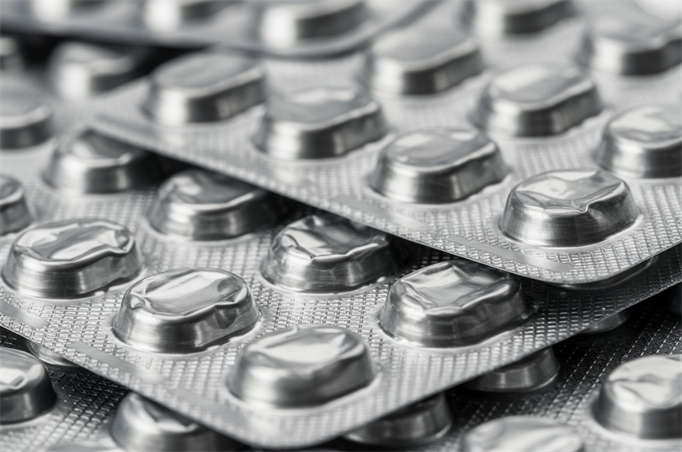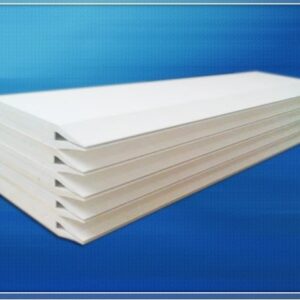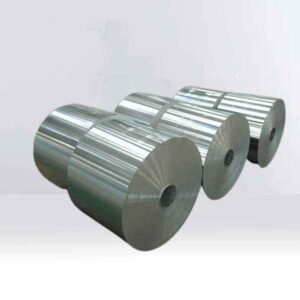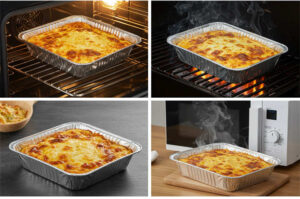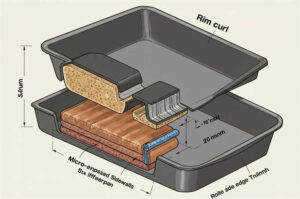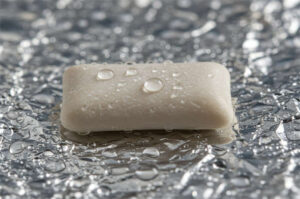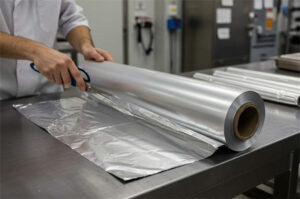In the world of materials and packaging, aluminum foil paper and aluminum foil tape have emerged as versatile staples, finding their way into countless applications across diverse industries. While both products share aluminum foil as their base material, their distinct characteristics and use set them apart significantly. This blog post delves into the differences between aluminum foil paper and aluminum foil tape, exploring their unique properties, applications, and advantages. Whether you’re a food, pharmaceutical, construction professional, or a curious consumer, understanding these distinctions can help you make informed choices and maximize the benefits of these remarkable materials.

Definition and Uses
Papier d'aluminium is a sheet-like material made of aluminum foil with excellent ductility and flexibility. It is mainly used in cooking, such as wrapping food for baking or boiling to retain moisture and freshness. Additionally, it is widely used in food packaging, such as wrapping candy and cigarettes, to extend shelf life.
Aluminum Foil Tape is an aluminum foil base coated with a single or double layer of polymer pressure-sensitive adhesive. It plays a key role in industrial maintenance, such as sealing and insulating air conditioning and refrigeration pipes. The electronics industry also utilizes it for electromagnetic shielding and grounding.
Structure and Material Composition
Papier d'aluminium primarily consists of high-purity aluminum foil without added materials, making it highly conductive and heat-resistant.
Aluminum Foil Tape includes an aluminum foil layer and one or multiple adhesive layers, such as acrylic or plastic adhesives, to enhance adhesion.
Functional Characteristics
Papier d'aluminium withstands high temperatures between 200°C and 400°C, offers flexibility, and molds easily around food or packaging surfaces.
Aluminum Foil Tape features strong adhesion and excellent sealing capabilities, preventing gas leakage and moisture penetration. It also demonstrates heat and cold resistance, making it ideal for harsh environments.
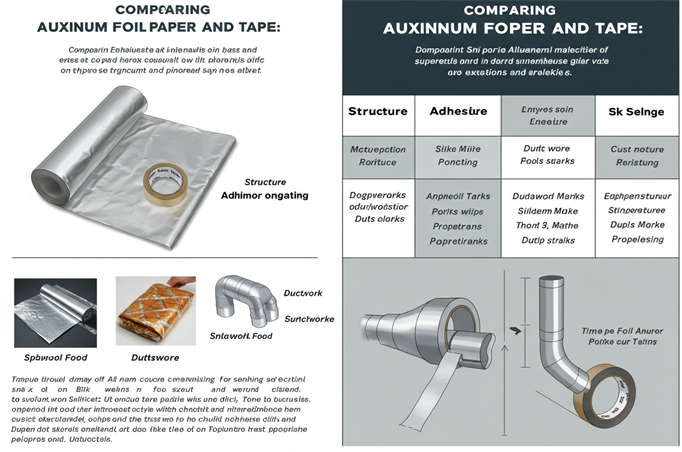
Application Scenarios
- Aluminum Foil Paper: Commonly used in cooking and food packaging, such as grilling, baking, and candy wrapping.
- Aluminum Foil Tape: Frequently applied in pipe sealing, electromagnetic shielding, and equipment maintenance in industries like electronics, manufacturing, and construction.
Applications of Aluminum Foil Paper
Aluminum foil paper est utilisé in various industries with different aluminum alloy standards. Its excellent properties make it an indispensable material in many fields.
| Application Field | Application Example | Alloy Status |
|---|---|---|
| Emballage alimentaire | Packaging, storage, and cooking of food | 8011 |
| Insulation Materials | Air conditioning ducts, construction, insulation materials | 8011, 1235, 8079 |
| Electronics Industry | Capacitors, thermal management, shielding | 8011, 1235, 8079 |
| Pharmaceutical Industry | Pharmaceutical packaging and drug delivery | 8011, 1235, 8079 |
| Arts & Crafts | Creative and decorative uses | 8011 |
| Industrial Applications | Radiation barriers, lining materials, etc. | 8011, 1235, 8079 |
| Aérospatiale | Aircraft components and insulation materials | 8011 |
| Battery Technology | Electrodes, battery packaging | 8011 |
| Transportation | Vehicle components, insulation materials | 8011, 1235, 8079, 3003 |
| Household Use | Cleaning, organizing, and cooking | 8011 |
As seen in the table, aluminum foil has a wide range of applications across various industries. Its excellent properties make it an indispensable material in many sectors. Let me know if you need further modifications!
Industrial Applications
1. Air Conditioning Foil
Manufacturers use it to create air conditioner heat exchanger fins. Special coatings improve corrosion resistance and hydrophilic or hydrophobic performance, increasing efficiency and lifespan.
2. Battery Foil
Lithium-ion battery manufacturers rely on feuille d'aluminium as the positive current collector, especially in electric vehicle batteries.
3. Cable Foil
Aluminum foil provides sealing and shielding in cables, protecting them from external interference.
4. Honeycomb Aluminum Foil
This material enhances high-rise building facades with lightweight, high-strength, sound insulation, and waterproof properties.
Medical and Cosmetic Uses
1. Pharmaceutical Packaging
Feuille d'aluminium est largement utilisé en capsules, pill blister packs, and liquid sachets. It prevents moisture, light exposure, and heat, preserving medication quality.
2. Toothpaste & Cosmetic Packaging
Aluminum-plastic composite tubes protect toothpaste, creams, and cosmetics, ensuring durability and hygiene.
Household & Daily Life
1. Cleaning Grill Racks
Scrunching aluminum foil paper into a ball helps remove burnt food residue from grill grates.
2. Sharpening Scissors
Cutting through multiple layers of foil sharpens dull scissors by removing tiny imperfections from the blade.
3. Boosting Wi-Fi Signals
Placing a curved sheet of foil behind a Wi-Fi router can improve signal strength in a targeted direction.
Decorative & Construction Uses
1. Decorative Foil
Aluminum foil laminated with plastic est largement utilisé en architectural decoration, furniture, and gift box packaging due to its heat insulation, waterproofing, soundproofing, and fire resistance.
2. Insulation Materials
Applying aluminum foil to insulation materials simplifies installation while improving aesthetics and cleanliness.
Other Creative Uses
1. DIY Toys
People use aluminum foil paper to craft creative toys, such as hand-waving figures or miniature sculptures.
2. Easy Charcoal Ignition
Wrapping charcoal in foil allows for easier and faster ignition when grilling.
Aluminum foil paper’s heat conductivity, reflectivity, high-temperature resistance, and plasticity make it valuable in many industries beyond food packaging.
Unique Advantages of Aluminum Foil Paper in Food Packaging
Aluminum foil paper is critical in food packaging by providing exceptional protection and preservation.
1. Superior Barrier Protection
Aluminum foil effectively blocks oxygen, moisture, and external gases, extending food shelf life.
2. Excellent Light Shielding
It prevents light-induced mold growth and discoloration, preserving food color and nutrients.
3. Corrosion Resistance
Aluminum foil withstands acidic and alkaline substances in food, ensuring package integrity and safety.
4. Food-Safe Material
It does not react with food and meets strict hygiene standards.
5. Malleability
Manufacturers shape aluminum foil paper easily to match various food packaging designs, improving sealing and aesthetics.
6. Durability
Its strength and toughness prevent tearing or breaking, protecting food during transport and storage.
7. Heat Sealing Capability
Aluminum foil paper supports heat-sealed packaging, enhancing airtightness et prolonging food freshness.
8. Efficient Heat Transfer
It distributes heat evenly during cooking and baking, maintaining food texture and flavor.
These advantages make aluminum foil paper essential in packaging meat, seafood, baked goods, candies, and other food products.
Advantages of Aluminum Foil Paper in Pharmaceutical Packaging
Aluminum foil paper enhances emballage pharmaceutique with multiple protective features.
1. Superior Barrier Properties
– Oxygen Isolation
Aluminum foil paper blocks oxygen exposure, preventing oxidation and degradation of medication.
– Moisture Resistance
Its high waterproof capability keeps moisture out, preventing medicine from absorbing humidity.
– Light Protection
With up to 95% reflectivity, aluminum foil paper shields medicine from UV and visible light damage.
2. Corrosion & Temperature Resistance
– Stable at High & Low Temperatures
It withstands -73°C to 371°C, making it suitable for high-temperature sterilization and cold storage.
– Corrosion Resistance
Its natural oxide layer protects against gas corrosion. Manufacturers add protective coatings to acidic or alkaline medications.
3. Safety & Quality Assurance
– Sterile Packaging
Vacuum-packed aluminum foil paper is ideal for cleanroom environments, reducing the risk of contamination.
– Strength & Flexibility
Aluminum foil paper resists crushing and deformation, ensuring medicine maintains its original form.
– Puncture Resistance
Industrial-grade aluminum foil packaging withstands physical impact, keeping medications intact.
4. Convenience & Practicality
– Lightweight & Portable
Its lightweight design makes it easy for consumers to carry and use on the go.
– Clear Information Printing
Manufacturers print essential details like drug name, dosage, and manufacturer directly on the foil for user convenience.
– Eco-Friendly Recycling
Aluminum foil paper is highly recyclable, reducing packaging waste and environmental impact.
How Does Foil Packaging Affect Drug Storage?
Aluminum foil paper significantly improves pharmaceutical storage by maintaining product quality and longevity.
1. Enhancing Drug Shelf Life
- Oxygen Barrier: Prevents oxidation and chemical degradation.
- Moisture Prevention: Keeps medications dry, avoiding spoilage.
- Protection contre la lumière : Shields against light damage, preserving effectiveness.
2. Maintaining a Sterile Environment
Vacuum-packed aluminum foil paper creates a germ-free storage space, reducing contamination risks.
3. Preventing Physical Damage
Aluminum foil paper’s strength and puncture resistance protect medications from pressure, impact, and tearing.
4. Improving Usability
- Compact & Portable: Ideal for travel-friendly medicine packaging.
- Easy Labeling: Displays clear drug information for safe usage.
5. Extending Sterile Packaging Lifespan
Vacuum-sealed aluminum foil paper extends the sterile period to 6 months, whereas traditional packaging lasts only around 1 month.
Aluminum foil paper remains a top choice for pharmaceutical packaging due to its protective, durable, and safe properties.
Aluminum foil paper and aluminum foil tape are distinguished by their structures, material compositions, and performance features, making them suitable for different applications. Aluminum foil paper excels in thermal conductivity, flexibility, and high-temperature resistance, making it ideal for kitchen cooking and food packaging. On the other hand, aluminum foil tape, with its strong adhesion and sealing properties, is widely used in industrial maintenance, electronics, and construction. Their unique advantages in food and pharmaceutical packaging, such as excellent barrier properties, light blocking, and corrosion resistance, ensure product quality and extend shelf life. By understanding these differences and leveraging their strengths, you can select the most appropriate material for your needs, enhancing efficiency and effectiveness in your endeavors.


